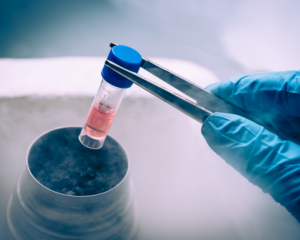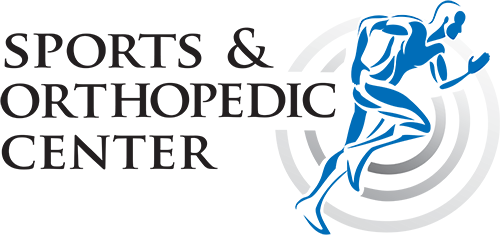Stem Cell Therapy
As science has progressed, new alternative treatments have become available to treat orthopedic conditions. An innovative and exciting development has been stem cell therapy used to treat various injuries and conditions. Many patients are now considering stem cell therapy as an alternative to surgery.
Stem cell therapy is a promising, minimally invasive treatment option. The patient’s own processed bone marrow is injected into affected joints. The bone marrow contains stem cells that reduce inflammation and promote healing within the joint.
What is a Stem Cell
A stem cell is what is known as a “simple cell.” The cell can produce more complex cells within the body as it divides. Stem cells are like little “miracle” cells in that they can create healthy tissues in the body and repair injured tissue caused either by injury or disease.

As far as treatment for orthopedic conditions, using stem cells is a new technique. It has shown positive results in research studies. Stem cells have shown evidence to effectively treat bone-joint injuries, forms of arthritis, and ligament and tendon injuries. It has been found that stem cell procedures promote faster healing of tissues than some orthopedic surgeries.
When do doctors recommend Stem Cell Therapy
Orthopedic specialists may recommend stem cell therapy for injuries or certain arthritic conditions that may not need a surgical repair. It is an option that can provide relief through healing in the body; something medications cannot accomplish independently. Patients are finding stem cell therapy is an effective treatment for pain management.
Orthopedic providers may use stem cell therapy alone or in combination with other orthopedic procedures. Some of these procedures may include:
- Bone grafts- where bones are replaced with healthy bones from another area of the body
- Fat grafts- fat is injected from one area of the body into the injured area. Fat contains some stem cells and can promote healing.
- Platelet-rich plasma (PRP)– A treatment where plasma is taken from the patient’s blood after being spun to remove red blood cells. The plasma is then injected into the affected area for treatment.
- Tenex Procedure: The Tenex procedure is a trademarked, non-surgical procedure that helps patients who are suffering from chronic tendon pain by nonsurgically removing damaged scar tissue on the tendons. This procedure, developed by Tenex Health, is particularly effective on the tendons of the elbow, shoulder, knee and ankle.
What is the procedure for Stem Cell Therapy
Stem cell therapy is performed in an outpatient orthopedic clinic. Depending on the severity of the damage, the doctor may suggest more than one treatment spread out a few weeks or months apart. Improvement in symptoms is also a factor that the provider will consider to determine if additional treatments are necessary.

The stem cell therapy procedure is a two-step process and may or may not be completed on the same day. The steps for the stem cell procedure are usually as follows:
- Numb your hip with a local anesthetic.
- The doctor uses a needle to extract a small amount of bone marrow tissue from the hip.
- Using a centrifuge, a technician will spin the bone marrow tissue. This creates a substance known as bone marrow aspiration concentrate (BMAC).
- The doctor numbs the area of injury or disease with a local anesthetic. Then injects the BMAC into the area that is targeted for treatment. An ultrasound helps to guide the doctor to ensure the right location is being treated.
After you receive the treatment, you go home after a short time of monitoring. There may be some slight pain or soreness around the injection site, but it is usually minimal.
Are there any risks to Stem Cell Therapy
There are always risks involved; however, with stem cell therapy injections, the risk is usually minimal. In rare cases, complications can become serious, so it is always important to have a honest conversations with your provider if you are experiencing any abnormal signs or symptoms.
Potential complications can include:
- Pain at the injection site
- Injection site reactions which might include swelling, redness, or irritation
- Infection
- Adverse reactions to the anesthetic, including allergic reactions
- Bleeding or bruising at the injection site
- Damage to nerves or blood vessels in the treatment area
To reduce the risk of complications, be sure to discuss your health history with your provider, including medications take regularly and any history of allergies.
What should I know about recovery
There is sometimes redness and swelling around the injection site, so do not be alarmed. However, if it seems to be worsening or is causing pain, be sure to report it to your provider.
You can usually manage pain with over-the-counter pain medication, but your doctor may prescribe pain medication. Make sure to take any prescription pain medication exactly as prescribed.
It may take up to 4 weeks before you notice a reduction in pain and improved mobility in the treated area.
The future of Stem Cell Therapy
Stem Cell therapy may dramatically change methods of treatment for orthopedic conditions in the coming years. It is still not widely used on many degenerative conditions such as arthritis, but it has shown promising results. More research is continuing in this area.
What is important to know is it is an effective treatment for pain management and mobility. There is limited research showing it may generate new cartilage and bone growth. For now, it is known to help with symptom management rather than a cure for the disease.
Where can I find out more information about Stem Cell Therapy treatment
Sports and Orthopedic Center is Florida’s #1 orthopedic and spine center! We provide a full range of services to treat orthopedic conditions, including stem cell therapy.
Our providers can evaluate your condition to determine the best treatment option for you based on your injury or progression of the disease. Our offices are located in Coral Springs and Boca Raton.
Contact us to make an appointment today!


